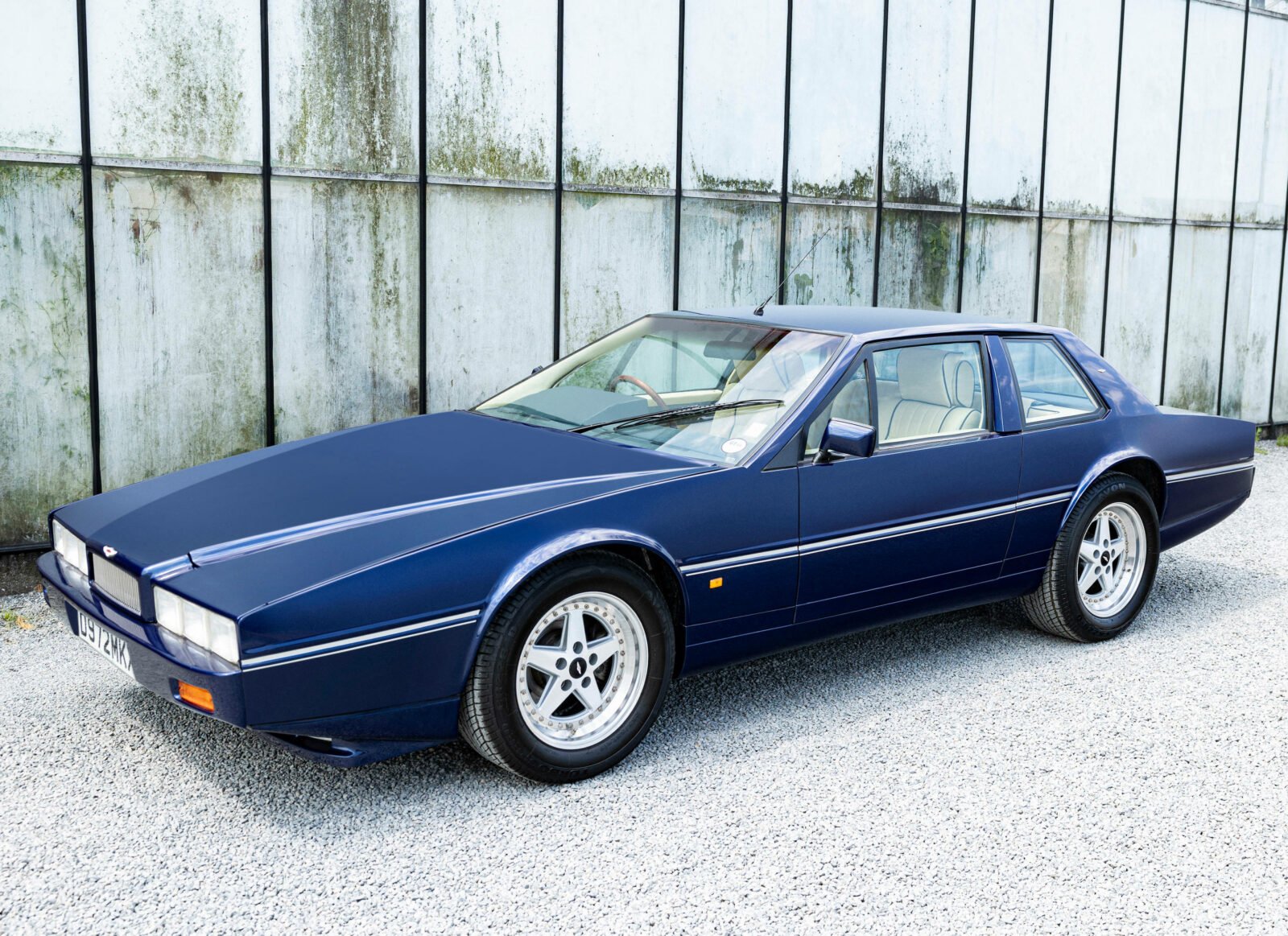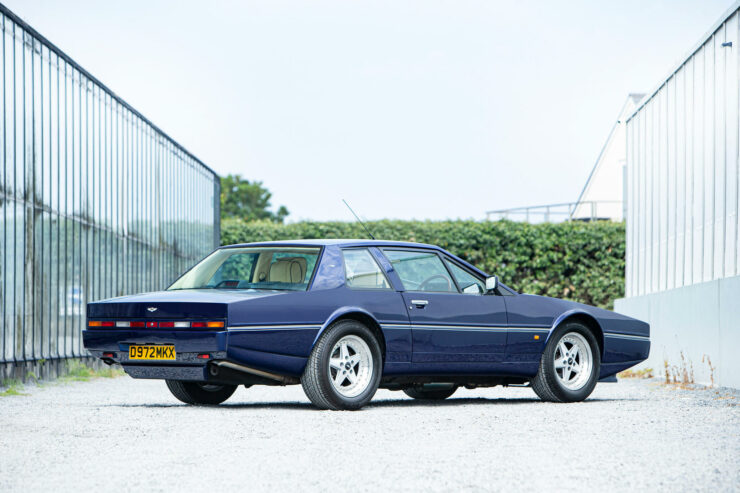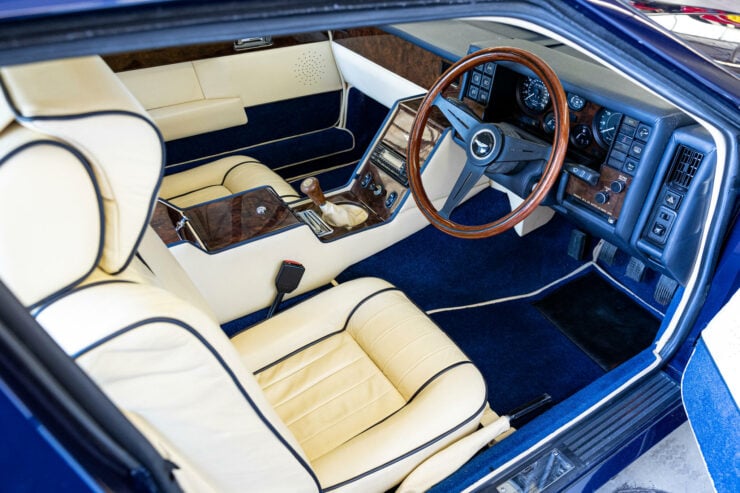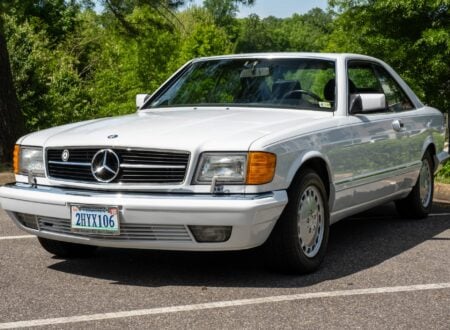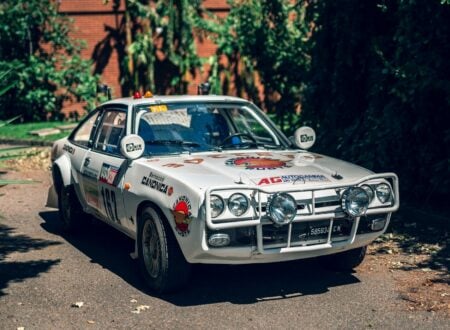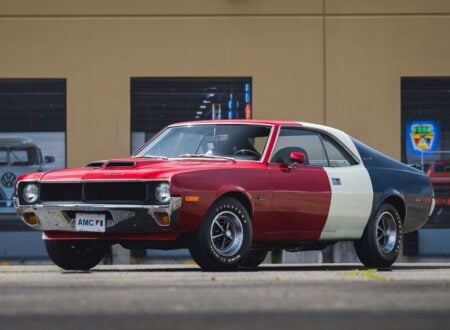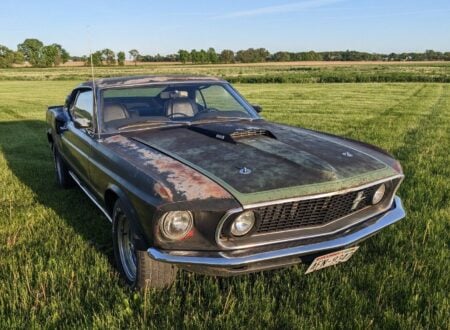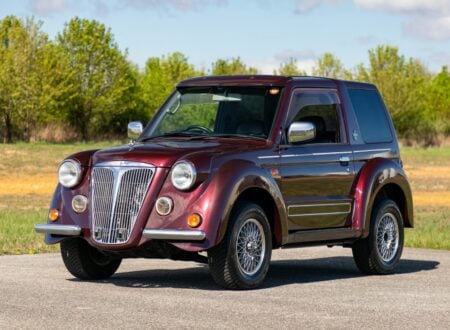The Aston Martin Virage coupe was planned to be the company’s flagship model. It was to be based on the Aston Martin Lagonda, which had controversial beginnings but which ultimately proved to be a great success. A development mule for of the car was put together on a shortened Aston Martin Lagonda platform, and became the only two-door version ever made.
Because the Virage mechanicals were neatly concealed underneath the folded paper “Origami” styled body of the Aston Martin Lagonda it was perfectly disguised so as to keep the motoring press and public in the dark as to what the new Virage was going to look like.
Fast Facts – The Aston Martin Lagonda Virage Coupé
- When Aston Martin decided to create their new Virage model they chose to base it on a remodeled Aston Martin Lagonda platform.
- The development and testing car created used an Aston Martin Lagonda platform which was shortened by 300 mm but clothed with Aston Martin Lagonda bodywork.
- The body was changed from the standard four-door to two-door, making this car the sole example of an Aston Martin Lagonda two-door coupe.
- This car was given the Aston Martin internal ID of DP2034 (DP = Development Project) and received many revisions and improvements.
- When its role as a development project car was completed DP2034 was purchased by a collector of rare and unusual Aston Martins who had it factory custom rebuilt to his bespoke specifications.
The Origins Of The Lagonda Virage Coupé
The foundation for the new Aston Martin Virage was the Aston Martin Lagonda Series 2-4. That model had represented Aston Martin’s third attempt to resurrect the Lagonda name which they had acquired in 1947. The first of the Aston Martin created Lagondas was the Lagonda Rapide which was made from 1961 until 1964. The second Lagonda was the Aston Martin Lagonda Series 1 which was made between 1974 until 1976.
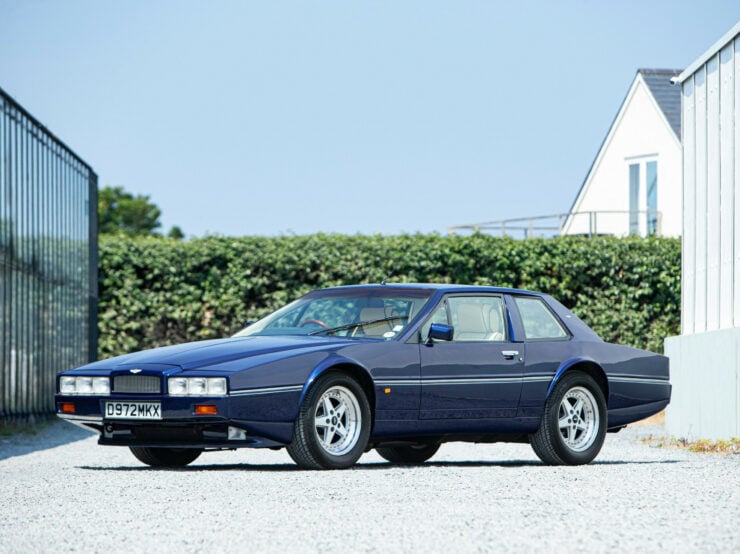

This second Lagonda model appeared in the time of the 1974 Oil Crisis which had pushed the price of oil products up to concerning levels. So despite the fact that it was a well thought out and desirable automobile it was expensive, and appealed to a limited market: only seven finished up being made.
Management at Aston Martin wanted to both provide cars for their traditional clientele, and also create a new and radically different car specifically for the generally different tastes of Americans and the rich of the oil producing countries of the Middle East. It would be judicious use of the “Lagonda” name that would play a part in them successfully achieving that.
The leading car styling trend during the 1970’s was the wedge shaped “folded paper” or “Origami” style as seen on the cars of Marcello Gandini like the Lamborghini Countach, and those of Giorgetto Giugiaro such as the Maserati Boomerang, the controversial DeLorean of “Back to the Future” fame, and the Lotus Esprit amongst others.
Aston Martin had a top designer working for them, William Towns, and he was charged with the task of designing this new ultra-modern and non-traditional car that would wear both Aston Martin and Lagonda names.
This new car was to embrace the folded paper wedge style and incorporate cutting edge technology, especially in the most visible areas such as the dashboard displays and switches.
William Towns came up with a design that was just as aesthetic and radical as the designs of Gandini and Giugiaro, while the cutting-edge technology to enhance the car’s instruments and controls was entrusted to graduate students of the Cranfield Institute of Technology.
They chose to use the Intel 8080 derived 8 bit Z80 CPU to power this system and if this sounds a bit primitive to modern readers that is because, of course, small computers were at that time a rarity. These were the days of the “Micro Bee” computer running the CP/M operating system, which was the system I was introduced to computing on.
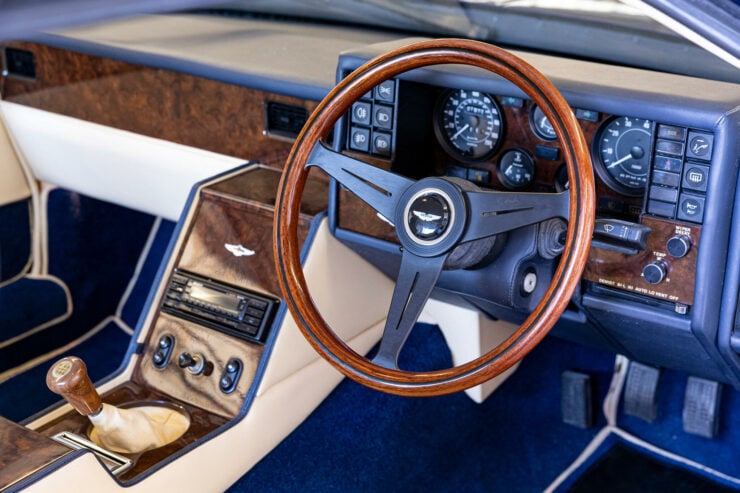

The student designed system used LED displays for the instrumentation and modern touch-sensitive buttons such as one would find in lifts/elevators. The Aston Martin Lagonda Series 2 was shown at London’s Earl’s Court Motor Show of 1976 and to everyone’s amazement and joy the orders flooded in.
The story was not to have a “happy ever after” ending however as problems with the electronics and LED displays soon became apparent.
So Aston Martin were faced with a choice to either give up on the radical “cutting-edge” system or bleed money in persisting with it. They chose to bleed money and a new system was created from scratch by Texas based aircraft control systems company Javalina Corporation. Their staff had their new system completed and operational in 45 days. This new system was used in the Series 3 cars and replaced the trouble prone LED displays with aviation CRT units.
For the Series 4 Aston Martin’s engineers made the common-sense decision to use conventional instrumentation and controls which made things reliable and ergonomic. The Series 4 was also given a styling update by William Towns becoming a little more rounded – although the styling changes are subtle.
The trouble with using cutting-edge technology is that it can cause a company to bleed money at an alarming rate – that’s why we often refer to it as “bleeding edge” technology. But in this case Aston Martin achieved the result they desired, but at a cost.
The Aston Martin Lagonda was only ever made as a four door car despite the fact that William Towns had done designs for a two door model. But when Aston Martin decided to use the Series 4 Aston Martin Lagonda as the basis of their new Virage model, and they needed a test-bed mule, the obvious thing to do was to shorten an Aston Martin Lagonda by 300 mm and make their Virage test mule out of that.
So it was that just one two-door Aston Martin Lagonda was built: and it was to be a refined hybrid that incorporated the best of the three models of Aston Martin Lagonda that had preceded it.
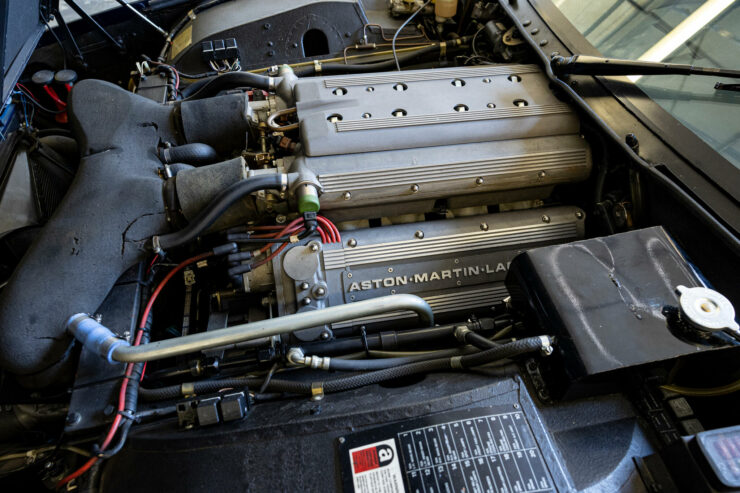

In order to create this one-off development car, which was given the internal identification code DP2034, Aston Martin’s engineers took an Aston Martin Lagonda and reduced its length by 300 mm.
The car was then fitted with a front end made with the earlier style of front wings/fenders, bonnet/hood, roof, and nose assembly. For the rear they used the Series 4 boot/trunk and tail.
They wisely did not attempt to fit the trouble-prone computer reliant instrumentation and controls but fitted the vehicle with conventional tactile push button switches and tasteful analogue instruments, as had been used on the Series 4 Aston Martin Lagonda.
The engine used for this vehicle was initially an early version of the 5.3 litre V8, which was subsequently replaced with the engine that was planned for the Virage, the four-valves-per-cylinder 5.3 litre V8: this engine sending its rather abundant power and torque to the rear wheels via a ZF five-speed all synchromesh manual gearbox. The whole system being something to gladden the heart of any enthusiast driver.
Being a development car DP2034 was subjected to many changes during the course of testing and refinement. One of these changes was the fitting of the Virage De Dion rear suspension system in 1987, which was the same year the double-valve V8 was fitted.
DP2034 remained incognito while the development of the Virage was completed and Aston Martin’s new model made its debut at the Birmingham Motor Show of 1988.
With her role completed DP2034 languished in storage in Aston Martin’s Service Department until she was spied by a collector of rare and unusual Aston Martins who decided it was a car he would very much like to purchase and have completely rebuilt to his own specifications.
Aston Martin agreed to sell DP2034 to him and so she was completely stripped down and rebuilt from the ground up beginning in early 1990.
The car was fitted with new production Virage suspension, while the instruments were analogue and the switches of the tactile button type.
The interior was re-done to the high standard of the Aston Martin Lagonda with leather seats and walnut veneer trim. The car being finished in the Pacific Blue Pearlescent paintwork used by Ford, and the car completed in February 1993.
The gentleman who purchased DP2034 was rather tall at 6’3″ and one of the things he liked about this Aston Martin Lagonda Virage was the spaciousness of the interior, which provided him with abundant room, something uncommon on sports cars.
In addition to the creature comforts of the interior, and the blending of the uncompromising folded paper wedge exterior with the traditional analogue instrumentation set in walnut veneer, was the performance and handling of this unique car.
The performance attributes of this custom built sole example of a two-door Aston Martin Lagonda were confirmed by motoring journalist and racing driver Tony Dron when he penned a review of the car for “Thoroughbred & Classic Cars” magazine, in their July edition.
Tony Dron described the car thus “This is a magnificent machine which rides well at low speed but which handles faultlessly when driven fast… it has that thoroughbred feel which inspires faith and confidence…” “It’s that good: a full-blooded, pure-bred delight and that’s that.”
Head of Aston Martin Works Service, Kingsley Riding-Felce has been quoted as saying: “This prototype is particularly significant as it forms the link between Lagonda and Virage and was then the only two-door Lagonda to have been built.”
So DP2034 has emerged as a poignant taste of what might have been had Aston Martin made some different decisions back at the time when the Aston Martin Lagonda was being created. But wisdom with the benefit of hindsight is of course the worse kind of wisdom.
It has become a unique and extraordinary example of that blending of the ultra-modern and traditional conservative all rolled into one rolling work of automotive art: one that can roll along at a quite impressive 150 mph and accelerate up to that speed in a most satisfying short order.
This car is coming up for sale by Bonhams Goodwood Revival Collectors’ Motor Cars and Automobilia auction and you can find the sale page with further details here.
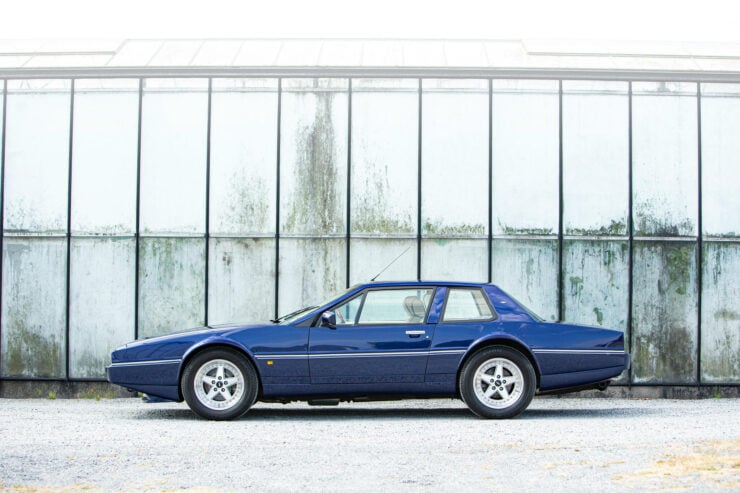
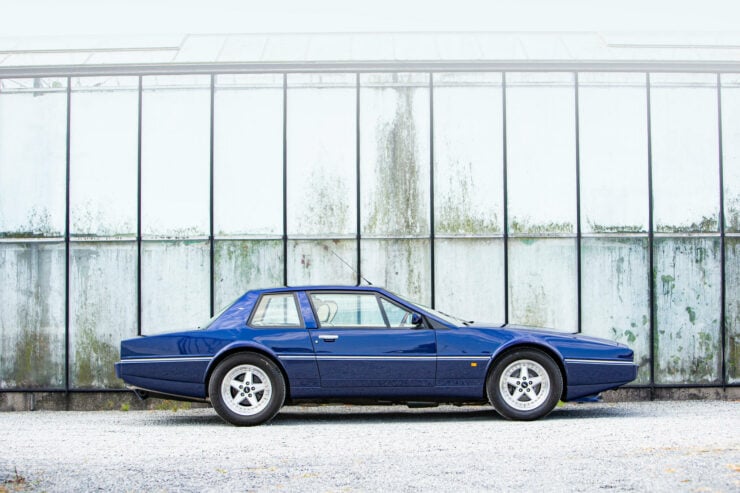
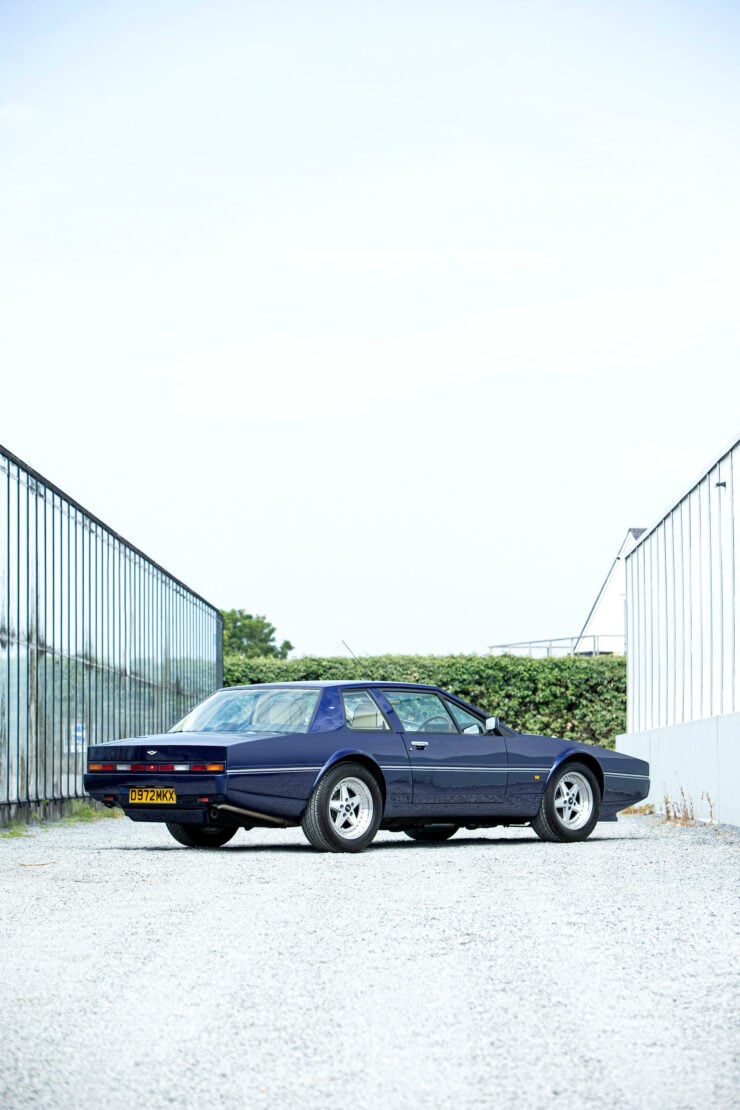
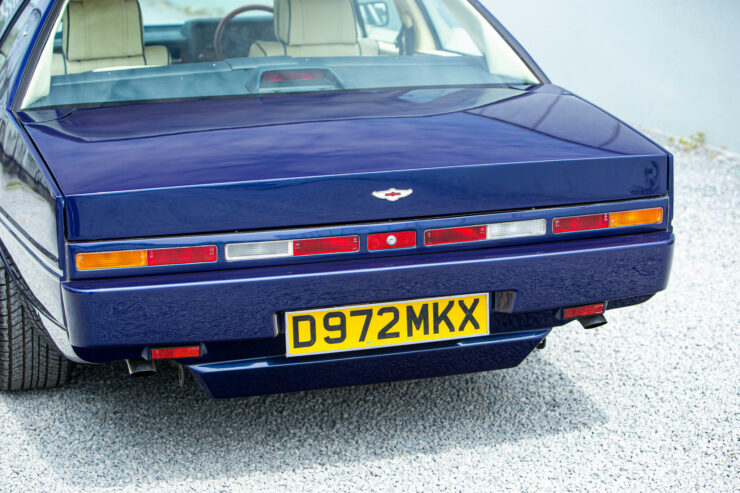
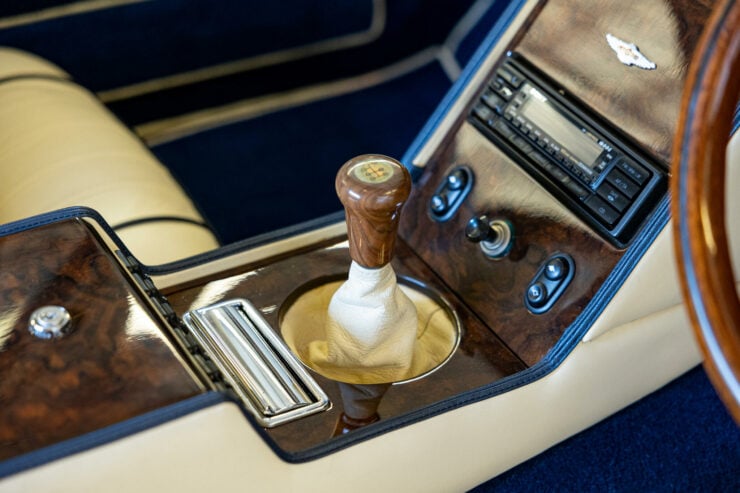
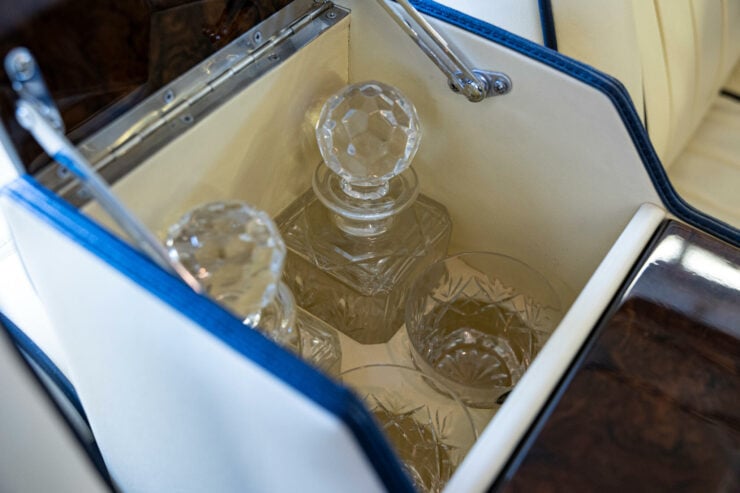
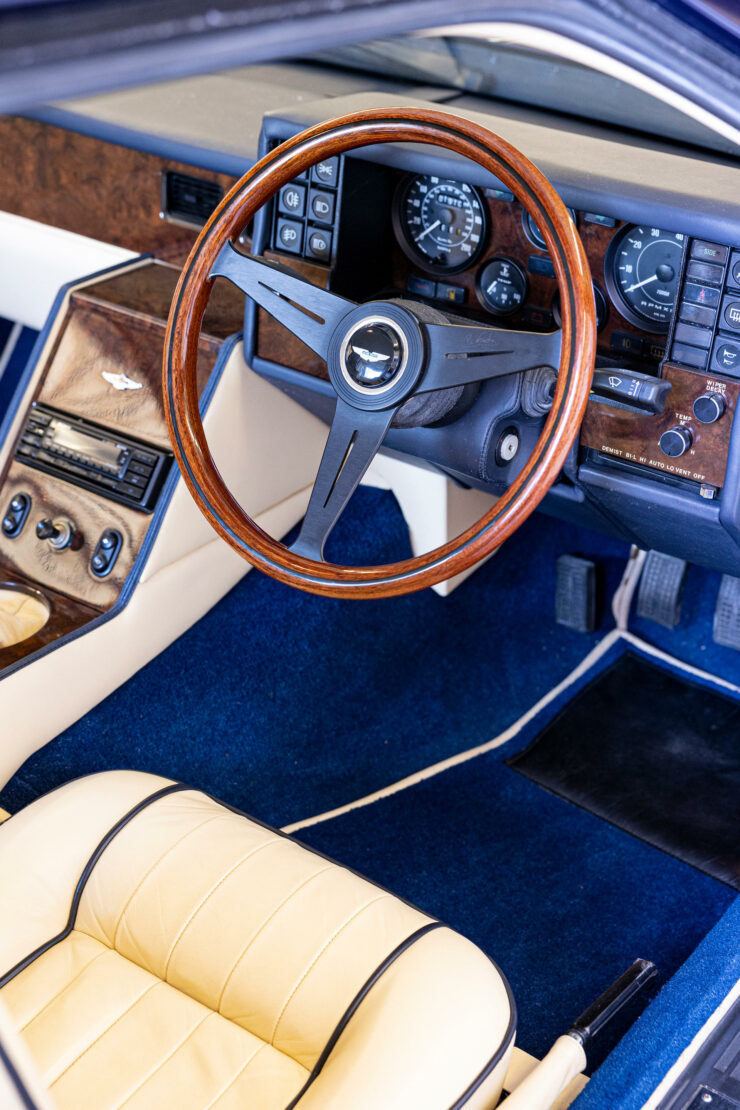
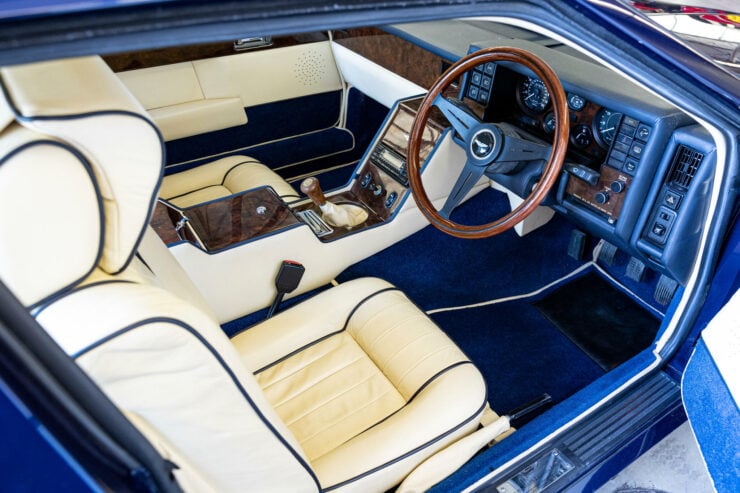
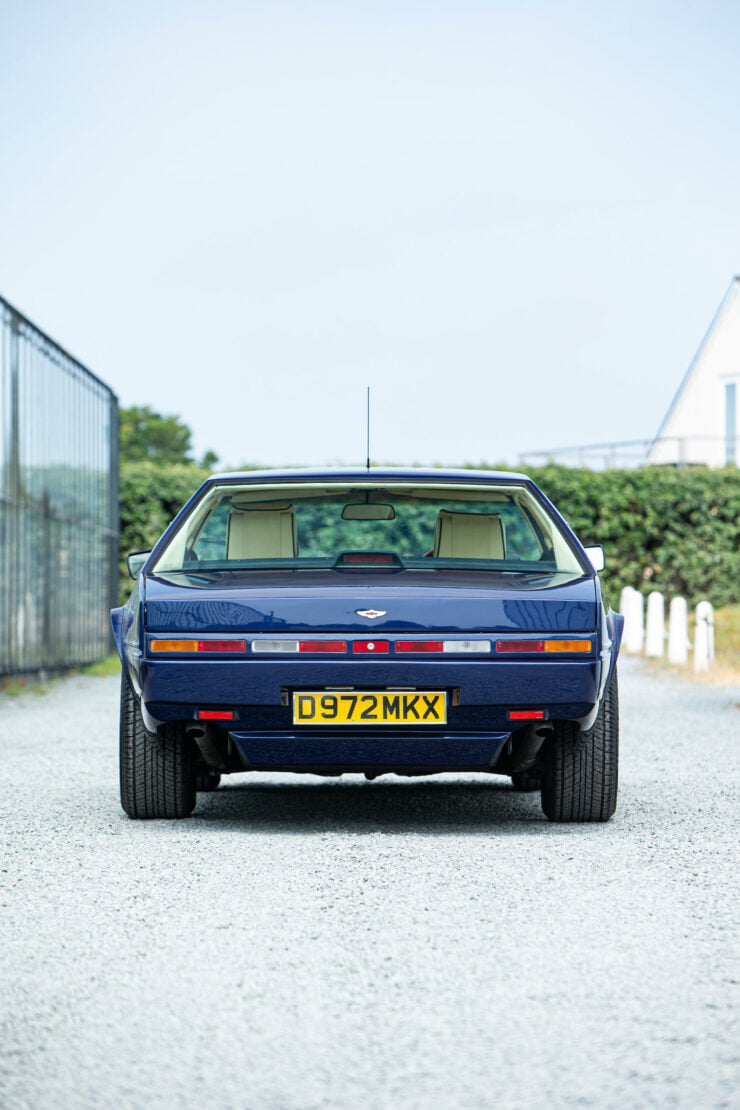
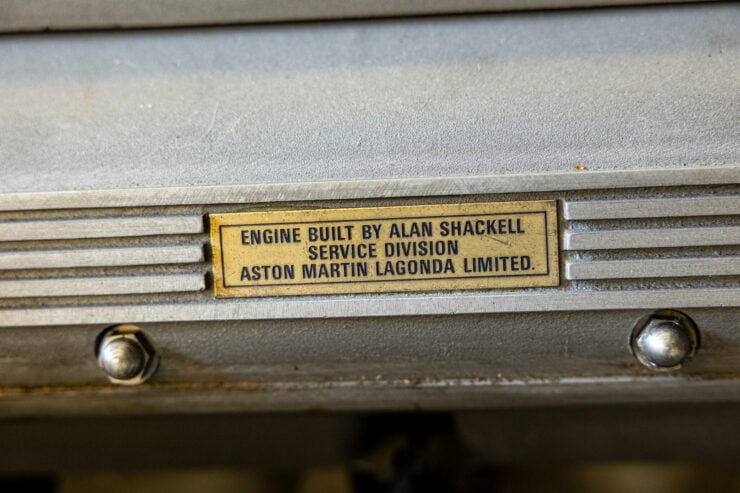
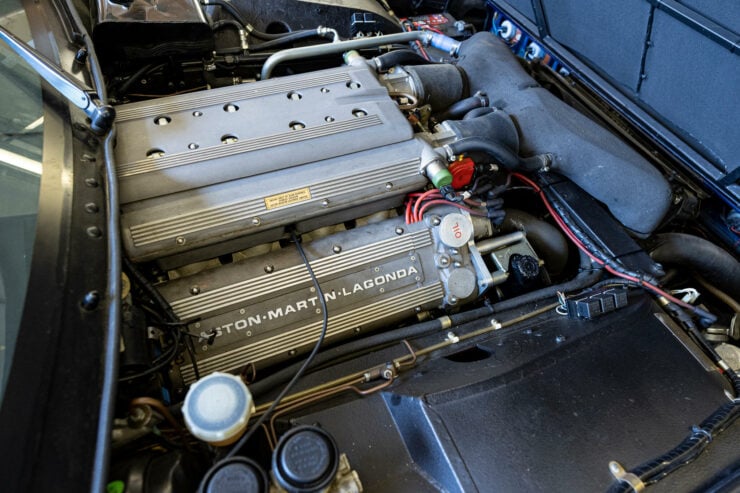
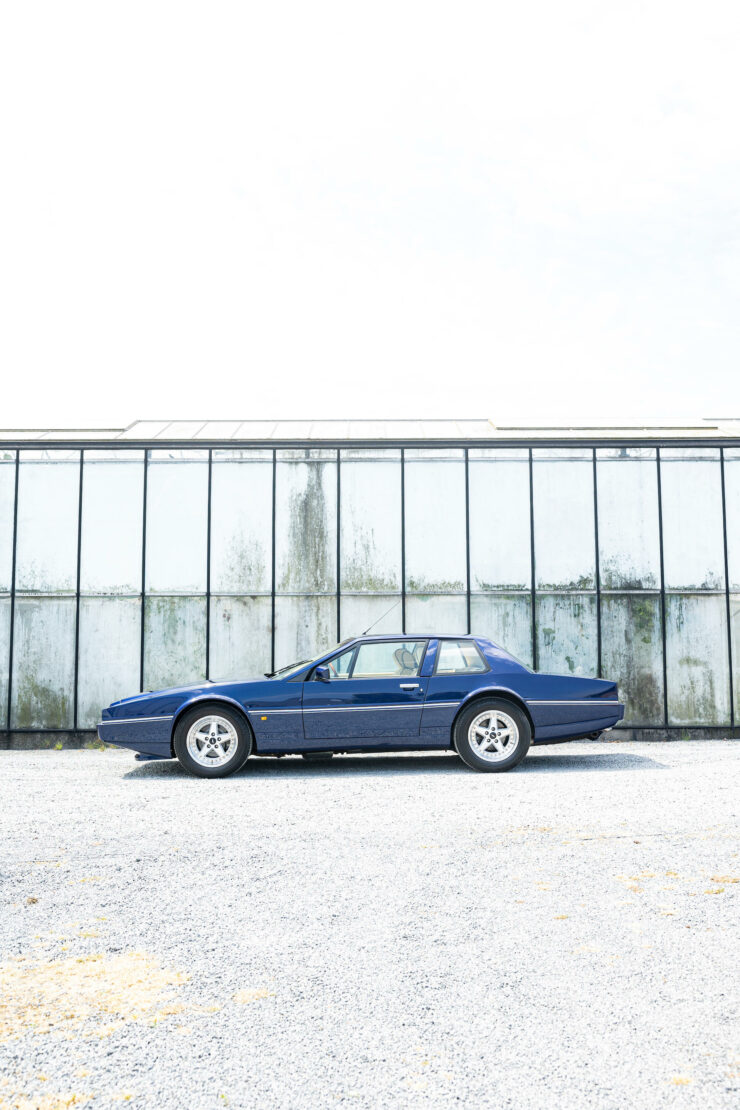
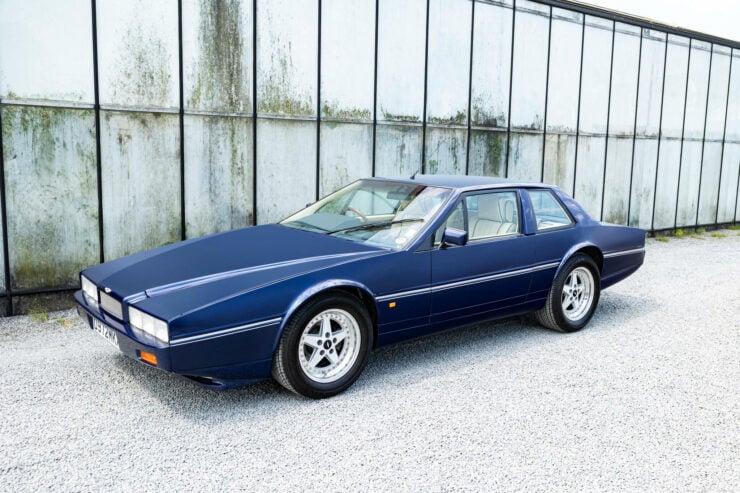
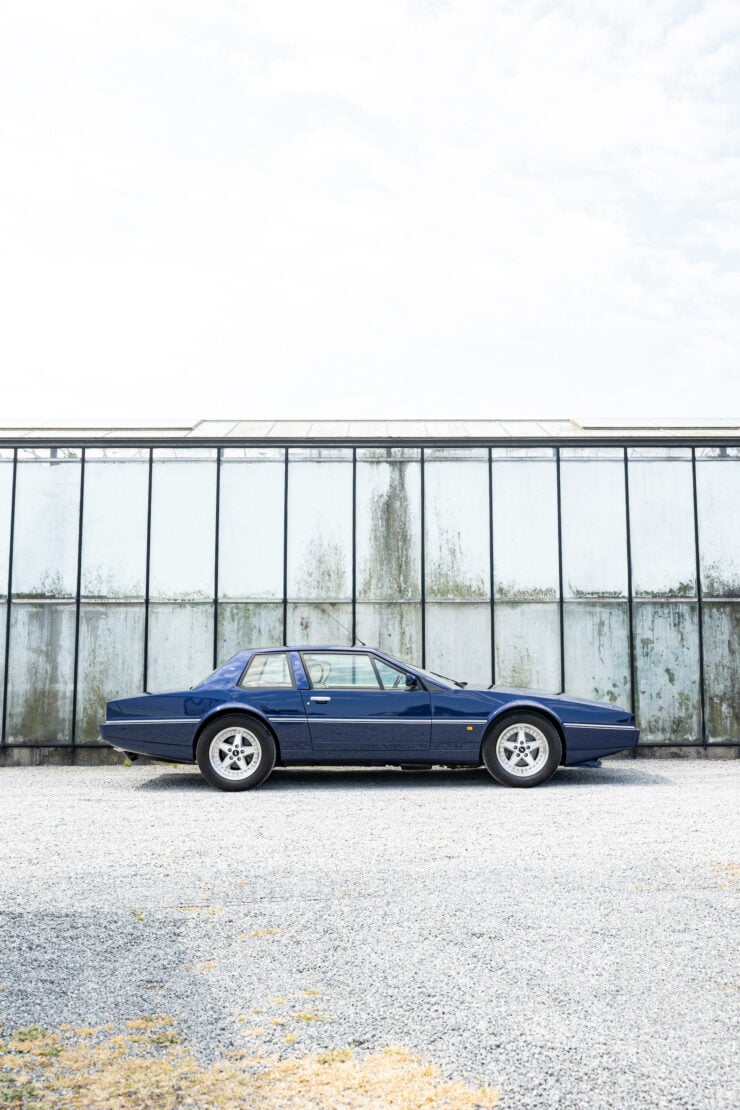
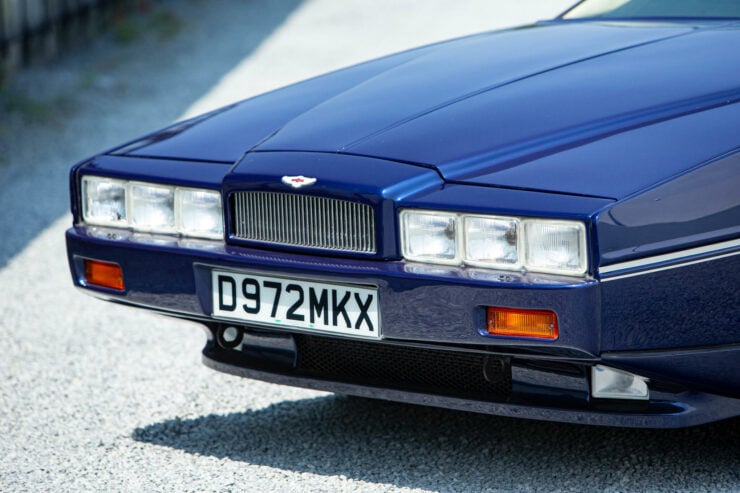
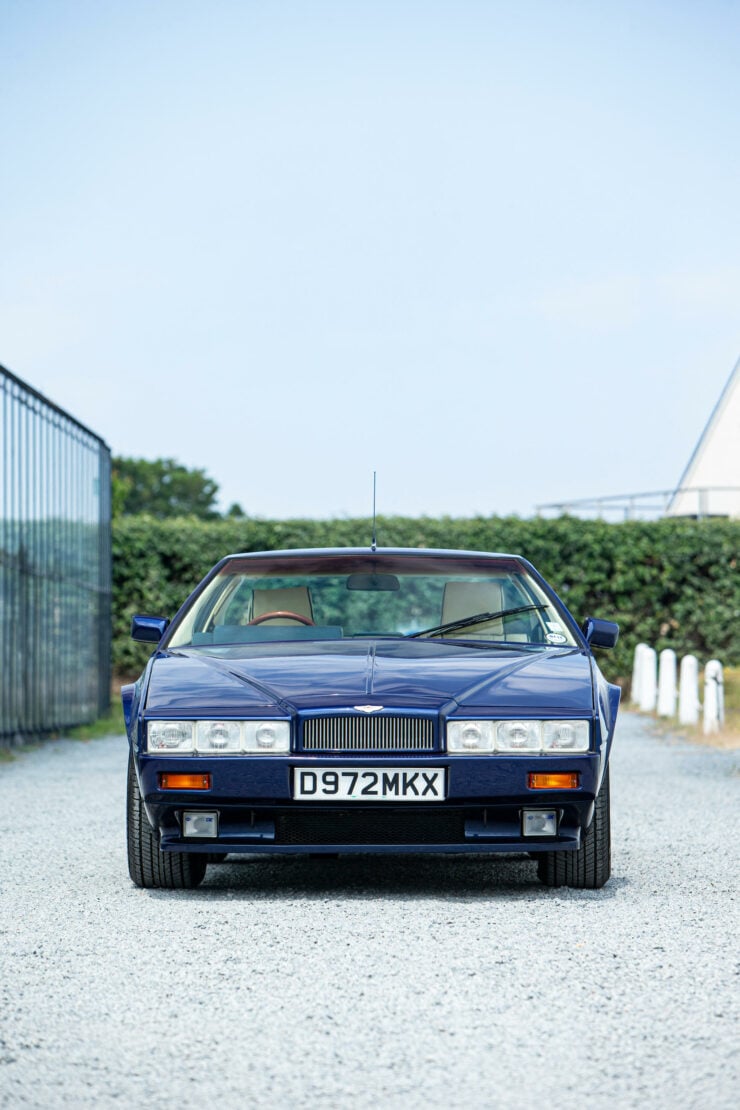
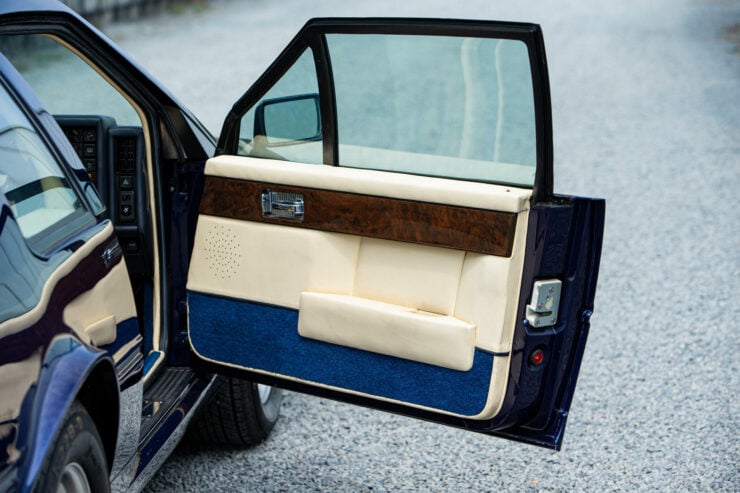
Picture Credits: All pictures courtesy Bonhams.

Jon Branch has written countless official automobile Buying Guides for eBay Motors over the years, he’s also written for Hagerty, he’s a long time contributor to Silodrome and the official SSAA Magazine, and he’s the founder and senior editor of Revivaler.
Jon has done radio, television, magazine, and newspaper interviews on various issues, and has traveled extensively, having lived in Britain, Australia, China, and Hong Kong. The fastest thing he’s ever driven was a Bolwell Nagari, the slowest was a Caterpillar D9, and the most challenging was a 1950’s MAN semi-trailer with unexpected brake failure.

